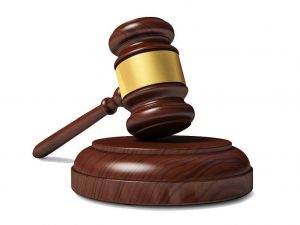
ABS completes floating wind turbine study for BSEE
Written by Nick Blenkey JUNE 5, 2012 — ABS has concluded a study on the technical feasibility of floating wind turbines for the Bureau of Safety and Environmental Enforcement (BSEE).
JUNE 5, 2012 — ABS has concluded a study on the technical feasibility of floating wind turbines for the Bureau of Safety and Environmental Enforcement (BSEE).
The goal was to determine how floating structures and moorings would be affected by the strong interactions among the wind turbine rotor, control system, floating platform and mooring/cable system and how different loading events could impact these systems.
ABS was awarded this study in December 2010 through the BSEE’s Technology Assessment and Research (TA&R) Program. The project included a technical feasibility study of existing floating wind turbines. Study results served as a basis for identifying the critical technical challenges to deploying floating wind turbines on the U.S. Outer Continental Shelf (OCS). The final step of the project was the proposal of a draft design guideline for permitting floating wind turbine deployment on the OCS.
Extensive case studies were conducted to evaluate the characteristic load conditions and global responses of three representative design concepts, including a spar-type, a TLP-type and a column-stabilized (semisubmersible-type) floating support structure and their associated stationkeeping systems. Operational and extreme environmental conditions of the East, West and Gulf of Mexico coastal regions on the OCS were applied in all of the case studies.
Kenneth Richardson, ABS Executive Vice President, Energy Project Development, says the organization welcomes the opportunity to contribute to renewable energy development.
“While hydrocarbons will be the dominant source of energy in the foreseeable future, there is a need to expand the world’s energy mix,” Mr. Richardson says, noting that a number of countries are actively expanding wind energy consumption. “ABS is pleased to be working with the BSEE to help determine the viability of offshore wind energy installations for the U.S.”
Research findings were presented at a one-day workshop held at ABS World Headquarters in Houston, Texas on 20 March 2012. Representatives from national registries, industry, government and academia joined forces to discuss the results of the research and analysis.
Recommendations have been made for future research on the simulation software, design and analysis methods, design standard development and hurricane wind modeling for floating offshore wind turbines. The final report was submitted to BSEE in mid-May 2012.
ABS also was involved in an earlier BSEE TA&R project that resulted in a report titled “Design Standards for Offshore Wind Farms,” which was submitted to the BSEE in September 2011.
This report addressed two main subjects: the governing load cases and load effects of offshore wind turbines subjected to hurricane environmental conditions on the OCS; and the evaluation of the existing methods of calculating the breaking wave slamming loads on offshore wind turbine support structures.
“ABS is pleased to have been selected repeatedly by the BSEE to carry out renewable energy research,” says Qing Yu, ABS Managing Principal Engineer, Offshore Technology, Renewables. “We want to be part of the solution.”





Leave a Reply
You must be logged in to post a comment.